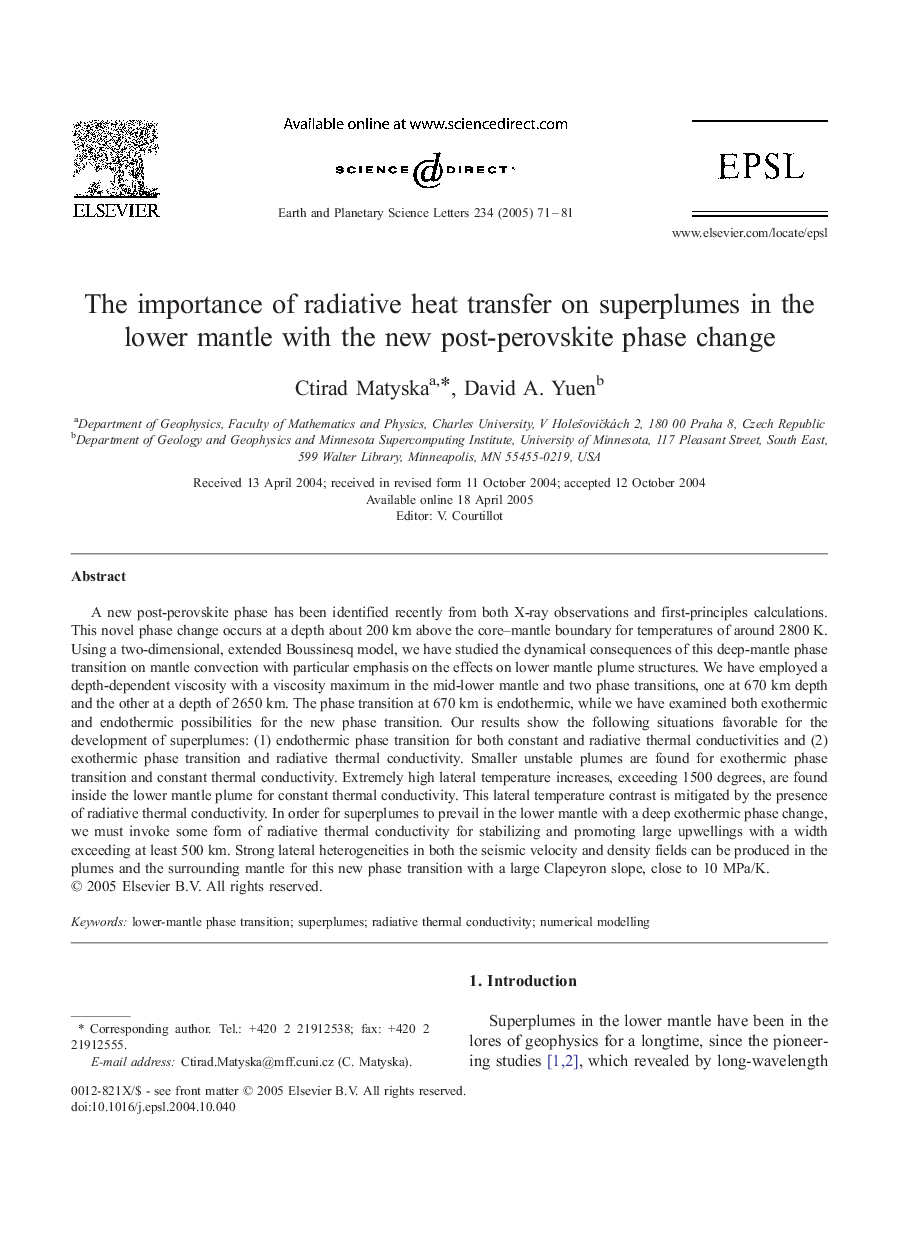| Article ID | Journal | Published Year | Pages | File Type |
|---|---|---|---|---|
| 9522264 | Earth and Planetary Science Letters | 2005 | 11 Pages |
Abstract
A new post-perovskite phase has been identified recently from both X-ray observations and first-principles calculations. This novel phase change occurs at a depth about 200 km above the core-mantle boundary for temperatures of around 2800 K. Using a two-dimensional, extended Boussinesq model, we have studied the dynamical consequences of this deep-mantle phase transition on mantle convection with particular emphasis on the effects on lower mantle plume structures. We have employed a depth-dependent viscosity with a viscosity maximum in the mid-lower mantle and two phase transitions, one at 670 km depth and the other at a depth of 2650 km. The phase transition at 670 km is endothermic, while we have examined both exothermic and endothermic possibilities for the new phase transition. Our results show the following situations favorable for the development of superplumes: (1) endothermic phase transition for both constant and radiative thermal conductivities and (2) exothermic phase transition and radiative thermal conductivity. Smaller unstable plumes are found for exothermic phase transition and constant thermal conductivity. Extremely high lateral temperature increases, exceeding 1500 degrees, are found inside the lower mantle plume for constant thermal conductivity. This lateral temperature contrast is mitigated by the presence of radiative thermal conductivity. In order for superplumes to prevail in the lower mantle with a deep exothermic phase change, we must invoke some form of radiative thermal conductivity for stabilizing and promoting large upwellings with a width exceeding at least 500 km. Strong lateral heterogeneities in both the seismic velocity and density fields can be produced in the plumes and the surrounding mantle for this new phase transition with a large Clapeyron slope, close to 10 MPa/K.
Related Topics
Physical Sciences and Engineering
Earth and Planetary Sciences
Earth and Planetary Sciences (General)
Authors
Ctirad Matyska, David A. Yuen,
